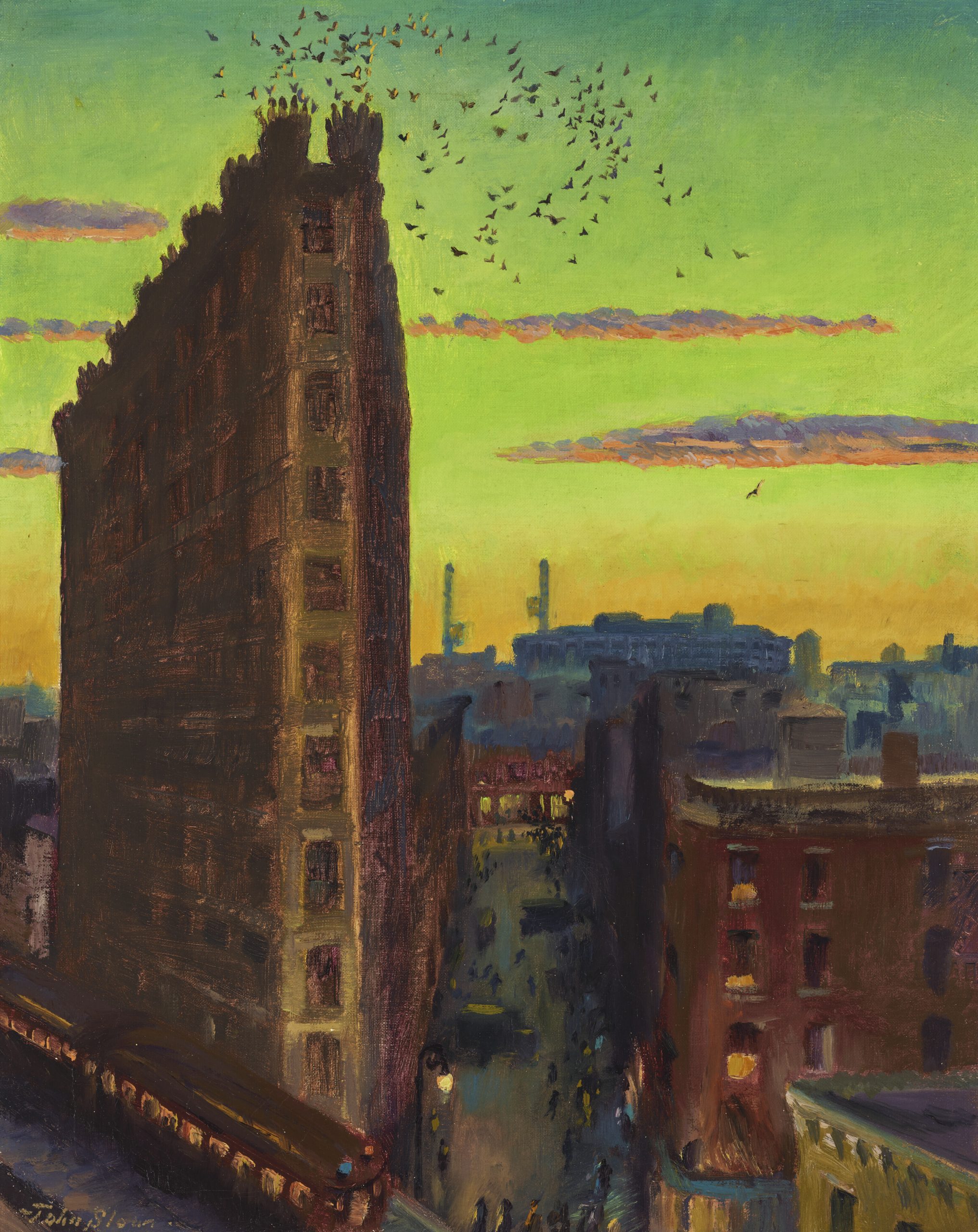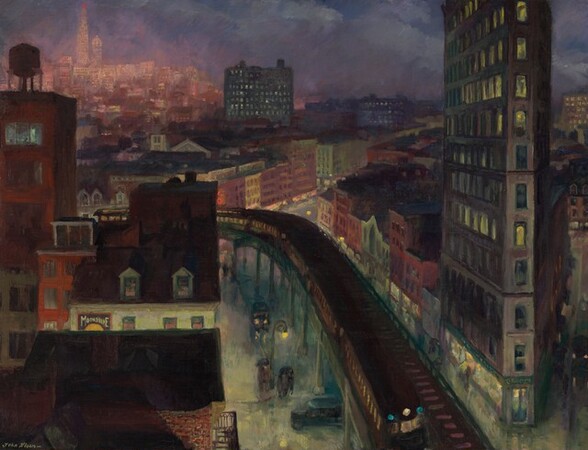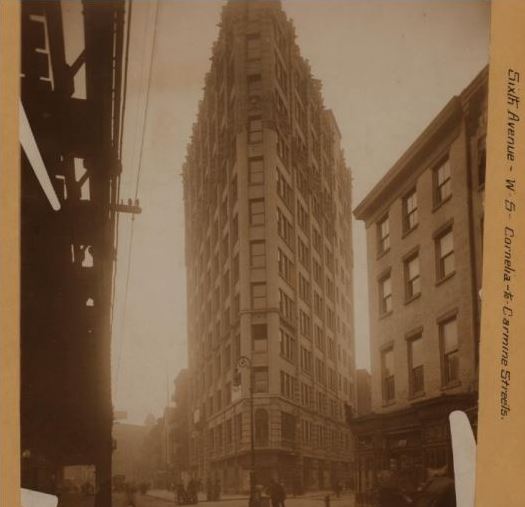There is a strange magic to American artist John Sloan’s (1871–1951) painting Cornelia Street. The artwork, recently acquired by the Woodson Art Museum, captures a quintessential New York view, a handsomely angular 1907 Beaux Arts building slicing the picture plane into tidy thirds of subway, street, and rooftop. The structure — the Varitype Building, or “Greenwich Flatiron” building — housed Sloan’s first art studio independent of his regular living space. On the building’s 11th floor, the studio represented a new financial and artistic freedom for the 40-year-old artist as he was completing the cycle of “city pictures” he had pursued since moving to New York in 1904.

John Sloan, Cornelia Street, 1920, oil on canvas, 20 x 16 in., Museum purchase with funds provided by the Nancy Woodson Spire Foundation
From the Varitype’s rooftop, a gaggle of birds alit, wheeling into an electric green and yellow sunset. The flow of pedestrians down Cornelia Street — a favorite city subject of the artist — is set against the harsh lighting of city streetlamp and storefront window. Sloan captures the noisy rattle of the Sixth Avenue El in suspended animation at the canvas’ edge, as it follows in inextricable curvature towards immediately below where the viewer is positioned, looking into the painting. This anticipatory confrontation belies the magic of the painting — the viewer is occupying an elevated position that no longer existed. Writing about The City from Greenwich Village, another view of the city and a companion painting to Cornelia Street, Sloan reveals his sleight of hand:

John Sloan, The City from Greenwich Village, 1922, oil on canvas, 26 x 33 3/4 in., National Gallery of Art, gift of Helen Farr Sloan
“Looking south over lower Sixth Avenue from the roof of my Washington Place studio … The triangular loft building on the right had contained my studio for three years before … The spot on which the spectator stands in is now an imaginary point since all the buildings as far as the turn of the elevated have been removed. The picture makes a record the beauty of the older city which is giving way to … modern New York.”
These “record[s] of beauty” in Cornelia Street and The City from Greenwich Village represent Sloan’s pivotal role as a visual historian of New York City, recalling a few enchanting lines from American poet Walt Whitman — a favorite of Sloan’s:
“How sweet the silent backward tracings! The wanderings as in dreams — the meditation of old times resumed — their loves, joys, persons, voyages.”

Photographer unknown, 2 Cornelia Street, ca. 1928, photograph, Village Preservation archives




